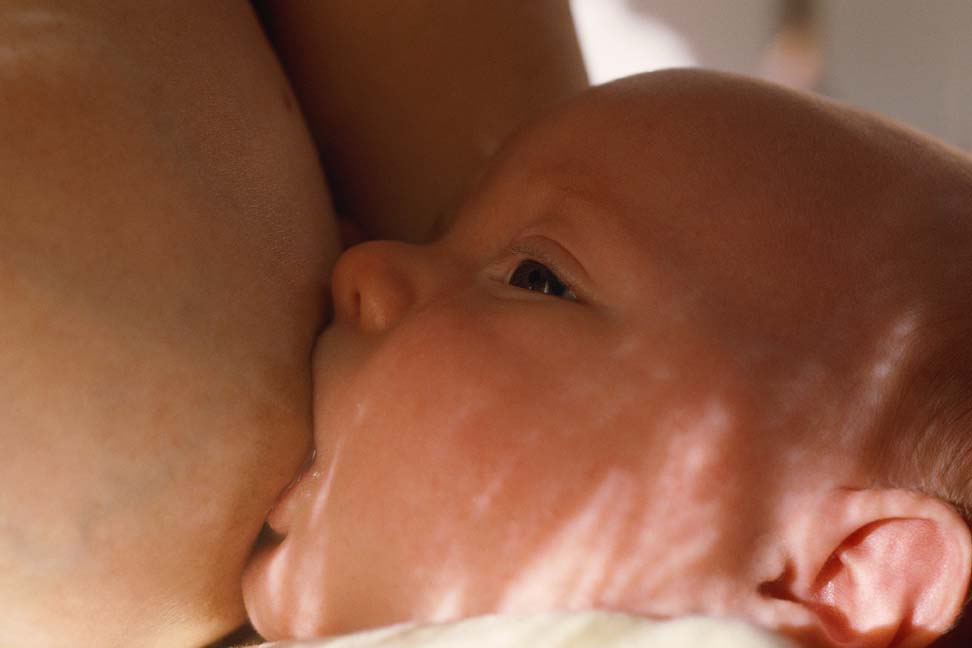Mastitis is a bacterial infection of the breast, usually caused by poor milk drainage from an area of the breast. It can be painful but is usually easily treated with antibiotics. You do not have to stop breastfeeding if you develop this infection and the infection will not harm your baby.
p
What are the symptoms?
- Redness of part of the breast, usually close to the nipple and areola.
- Tenderness, pain and/or burning in the infected area.
- Sometimes the area is swollen.
- Sometimes there is infected fluid (pus) coming out of the nipple.
- You may feel ill or have aches and you may develop a fever.
- Symptoms are similar to a plugged duct; however, the symptoms of mastitis are worse and a plugged duct will not cause fever or other feelings of illness.
What causes mastitis?
The milk glands have ducts that drain them which open on the skin of the nipple. Bacteria on the skin can travel up the duct and infect the duct and glands of the breast. If a duct is plugged or there is poor milk drainage from an area of the breast, there is a higher risk of infection. Mastitis often starts as a plugged duct. Poor breast drainage is the main cause, which is usually caused by a poor latch or not frequent enough feedings.
What should I expect?
The infected area is usually tender, and sometimes red and swollen. You may see some infected fluid coming from the nipple. Continuing to breastfeed may help, but antibiotics are usually needed to treat the infection. The symptoms usually resolve quickly once antibiotics are started. You should continue to breastfeed from that breast unless it is too painful. If it is too painful to nurse, you should express or pump milk from that side until you can nurse again.
How is it treated?
- It is treated with antibiotics. Your doctor will put you on an antibiotic that is safe for your baby (most antibiotics are) so that you can continue to breastfeed.
- You need to continue to drain milk from that side, either by nursing or by pumping or expressing milk. Massaging the area towards the nipple may help it to drain the infection.
- Warm compresses may also help.
- You can take acetaminophen or ibuprofen for the pain. Both are safe to take while breastfeeding.
What complications should I look for?
- Worsening pain or signs that the infection is spreading.
- If you are nursing less or only on one side, you want to be sure your baby is getting enough milk and continuing to gain weight well.
How can I prevent mastitis from developing?
- Keeping the breast well drained by frequent nursing, or expressing or pumping if necessary, can help prevent the infection. Do not allow your breasts to stay engorged.
- Good hygiene should also be practiced; wash your hands before breastfeeding and keep your nipples clean and dry.
- Going without a bra whenever possible, or wearing a looser-fitting bra, can help. Avoid sleeping in a position where the breasts are compressed against the bed.
When should I seek further care?
Consult with your doctor. If the redness is spreading up the breast or the pain is worsening, this usually indicates that the infection is getting worse.

